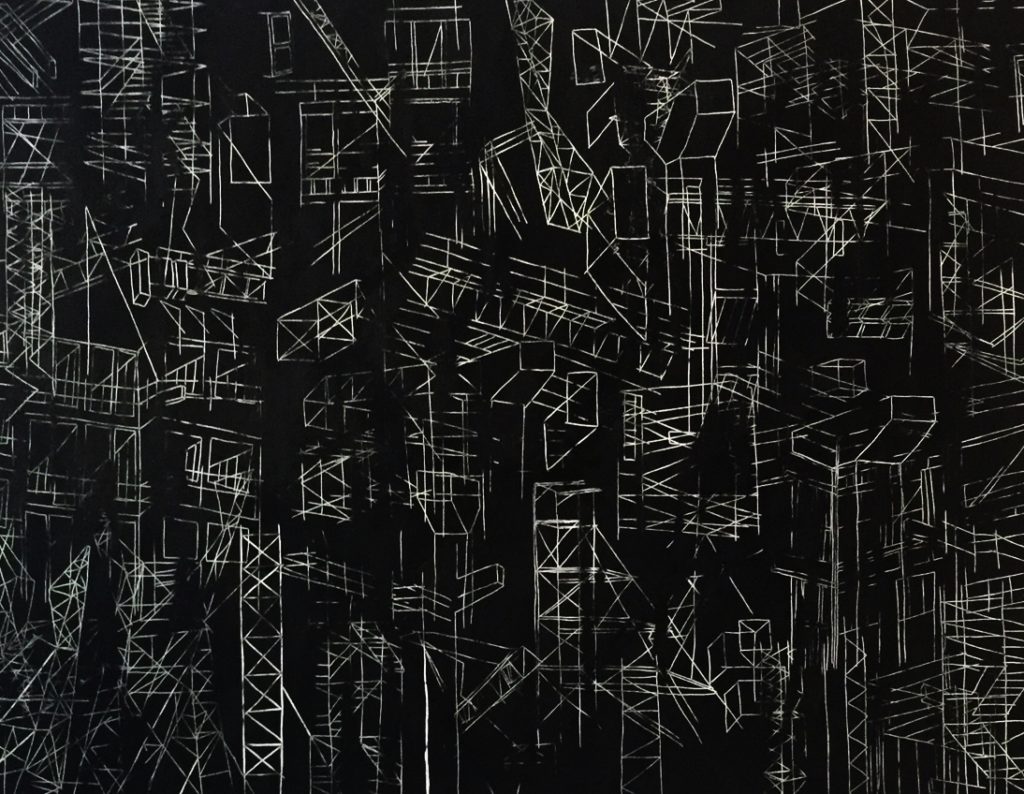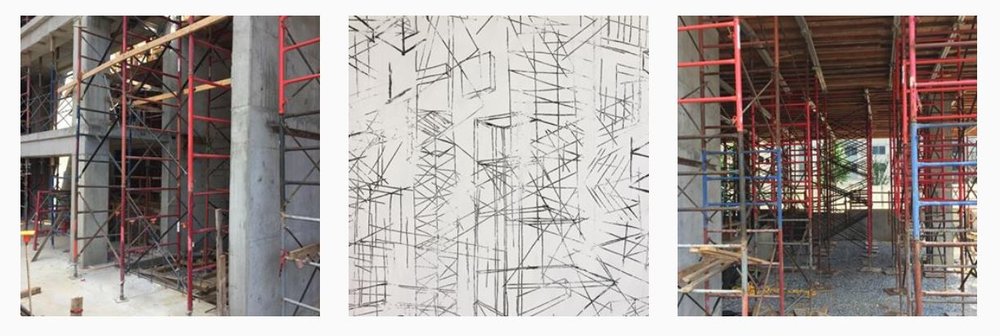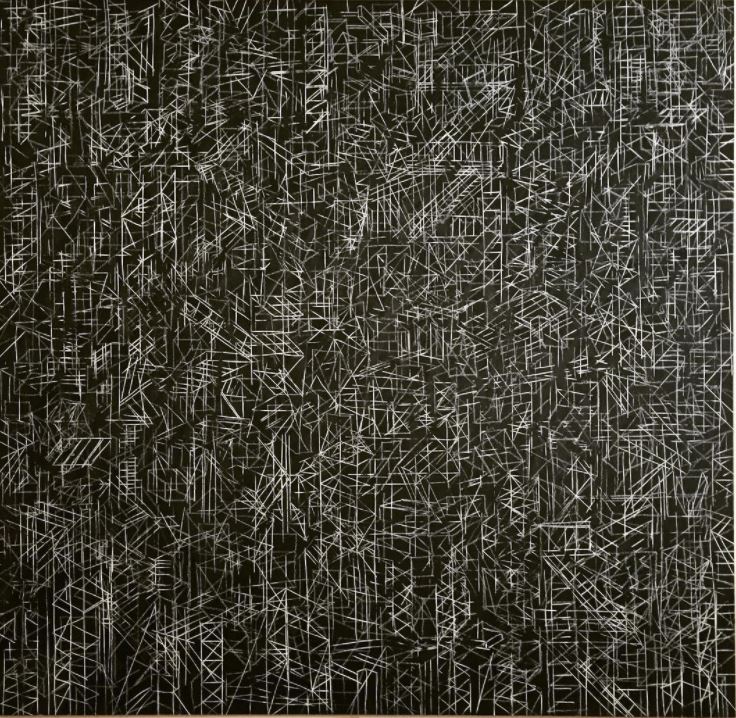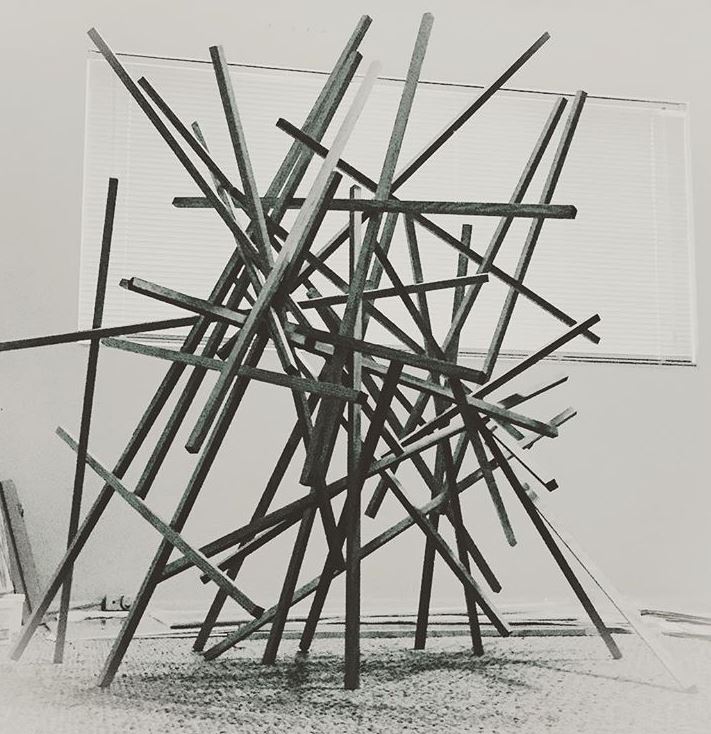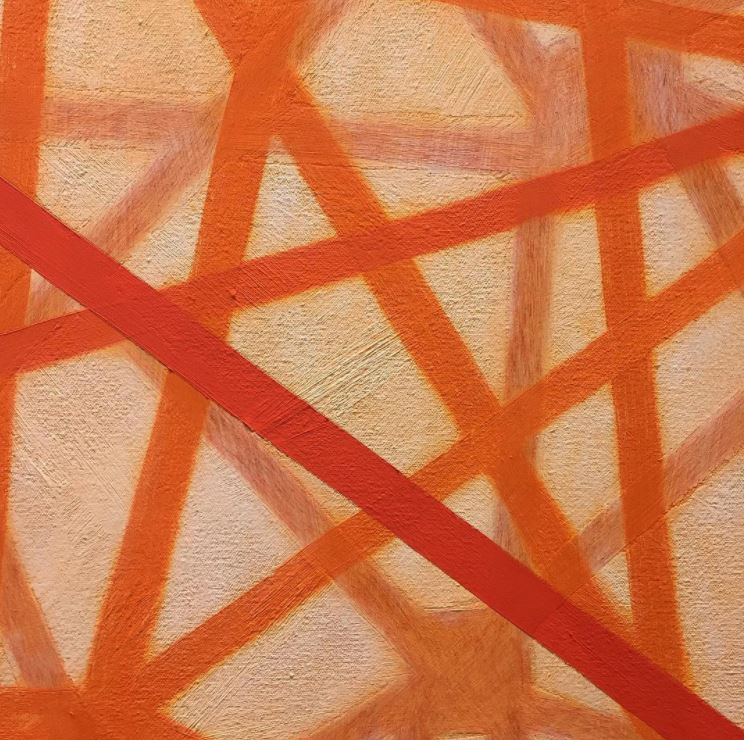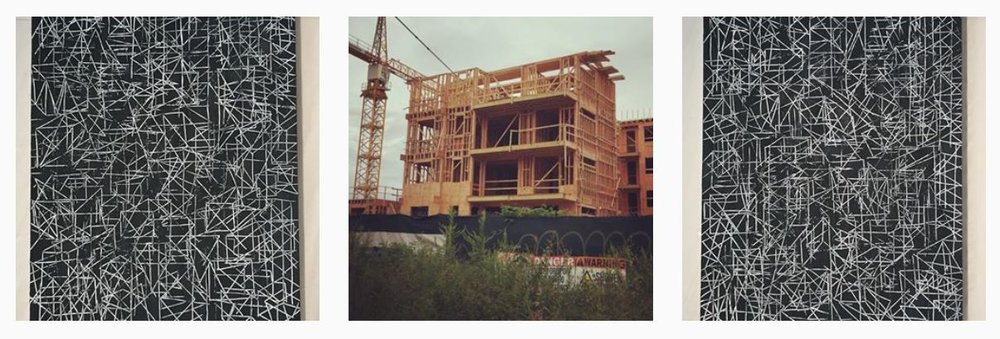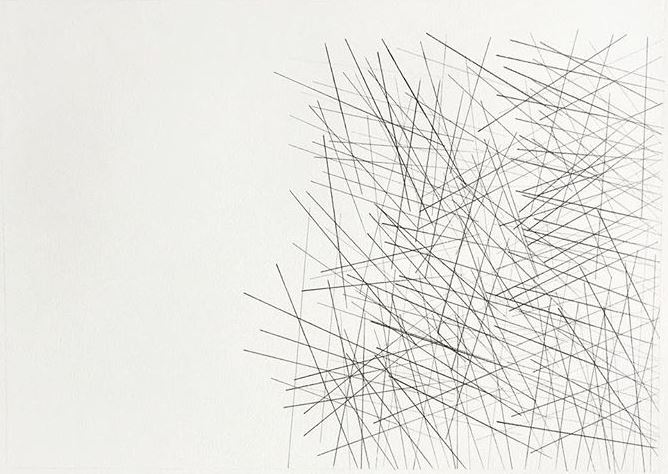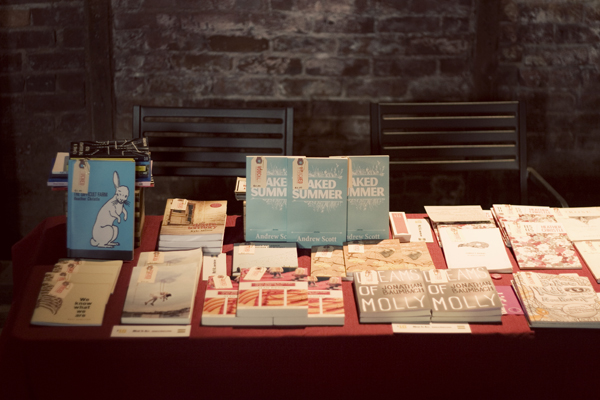This is a guest post from Amy Parry Projects. It was first published here, and has been condensed and edited.
Brett Smith is a self-taught abstract artist, represented in Atlanta by Sandler Hudson Gallery. We’ve been following his work for some time and just love it. We were delighted when he said yes to the casual interview, seen below. Thanks, Brett!
Amy Parry Projects: So why Atlanta? As a South-African native, how did you settle on this “city in a forest” and what are some things that keep you here?
Brett Smith: I got a tennis scholarship to play for Georgia State University. Back then, Atlanta was going to host the ’96 Olympics so I thought that would be a great experience. Compared to other college towns, Atlanta seemed to be an exciting city to live in and had a lot going for it, so it really was an easy choice. Apartheid was ending in South Africa and the future was very uncertain, I had this opportunity and I grabbed it.
APP: I know your current series is called From Scaffold to Thicket and is largely inspired by all the cranes and construction chaos that is always scattered around our city. Can you talk about the thicket element and how this body is a progression from past bodies of work that are more obviously about nature?
BS: The full name of the current body of work is ‘the portrait of a landscape under construction, from scaffold to thicket we build.’ Recently the themes and ideas behind my work have shifted. I have become more interested in how we interact with nature not just being inspired by trees, flowers, branches, etc. This delicate balance we have with each other and our precious planet, all the systems and structures that make up this complex web we interact with on a daily basis (and for the most part ignore) has become my new muse. All the construction going on around us in urban environments amplifies this idea of a constant need to build and grow. Nature also has a constant need (and struggle) to grow and flourish and this tension is the starting point for the current work.
APP: What kinds of “art tools” do you use that might surprise people?
BS: Well, the new paintings are made with an empty ballpoint pen and sometimes the back of a paintbrush. I have also used paint stirring sticks from Home Depot and Popsicle sticks, whatever works!
APP: Can you comment on the trial-and-error aspect of creating these layers of lines, along with how you begin and when you finish?
BS: The paintings are really this great combo of painting and drawing. Technically, they are made of paint and a cold wax medium but I view them more as drawings. I just start drawing elements and images from photographs that I have taken or collected from social media or the internet. At some point, I will pick up the paint brush and paint over some or part of the drawing. This creates a ghost-like quality which for me is evocative of the building being destroyed over time and then I draw new images over the top. Recently I have used oil pastel to make additional images once the paint dries. This can be considered an example of trial and error as you are taking a big risk when you decide to draw over something that you already think is successful, but no risk no reward!
APP: We noticed you experimented recently with a bit of 3D. Is sculpture something you think you will dig deeper into?
BS: Yes, sculpture is increasingly on my mind. It seems like a natural progression for me and I have some ideas when this work gets exhibited, so stay tuned!
APP: You’ve been doing the black-and-white thing through this series but we love your past use of color also, particularly the orange. Do you have a color you like best?
BS: That is a tough one, color is so seductive. Orange was a stand out from the LIFE series but I’m not willing to say that is my favorite. I think it depends on the shade and intensity of the color; I mean there is red and then there is REDDDD!!!
APP: Do you ever draw curves? Or doodle in circles?
BS: I do, the first work on paper I ever did was circles drawn with watercolor pencil. It was based on bubbles in water; water is life after all. A lot of my work based on flowers also embraces the curve or looped line. I like exploring line in all its forms I just try and find what will be appropriate for what I’m trying to achieve visually and thematically.
APP: We noticed that you use the hashtag #globalwarming sometimes when you post images of your work. How does the work comment on this timely topic?
BS: It gets back to this idea of balance. We need to keep building and expanding our cities, communities, and population, (but) the environment is struggling to survive. It really is the war of our time; too many wrong moves and the ramifications can be catastrophic. I’m trying not to take sides, [I’m] just observing and trying to start a conversation. I want the paintings to be slightly overwhelming, hints of scaffolding and construction cranes draw the viewer in as these images are familiar to everyone, and then you can explore the pictures and put your own spin on it.
APP: We loved seeing the recent work alongside many other great Sandler Hudson artists in Summer Thunder. Is there a solo show in the works so we can mark our calendars?
BS: There is definitely a solo show in the works, still working on the dates.
APP: Speaking of other artists, who are some of your favorite mark-makers?
BS: Cy Twombly probably has had the greatest influence on me. I feel like he is ever-present. There has been such a move to take the hand of the artist out of the painting process, for better or worse, I find I always come back to painters who get their hands dirty: Joan Mitchell, Brice Marden, Pollock, and Shiraga come to mind.
APP: What are some of your favorite places to get inspired around ATL, in the city or in nature?
BS: I love walking the BeltLine. I feel like it is such a great addition to the vitality of the city. The Mercedes-Benz stadium was just incredible to watch as it was being built. Anywhere a building is going up or coming down for that matter. Buildings are far more interesting during the construction phase or the destruction phase, they are constantly changing while they are being built, kind of like watching a plant grow. I took many ‘thicket’ photographs of thorn bushes in Africa last time I was there, and I see this influence in the new paintings.
APP: Do you follow “Cranes of Atlanta” on Instagram?
BS: No, but I will!
APP: Do that.
To learn more about Brett’s work, please visit Sandler Hudson Gallery or Brett’s website.
This post is in collaboration with Amy Parry Projects. Brett was interviewed by Lisa Thrower, the Director of Art Resources for Amy Parry Projects, an Atlanta-based boutique art consulting firm. This “Words with Friends” interview originally appeared on the APP Blog on October 20, 2017.

